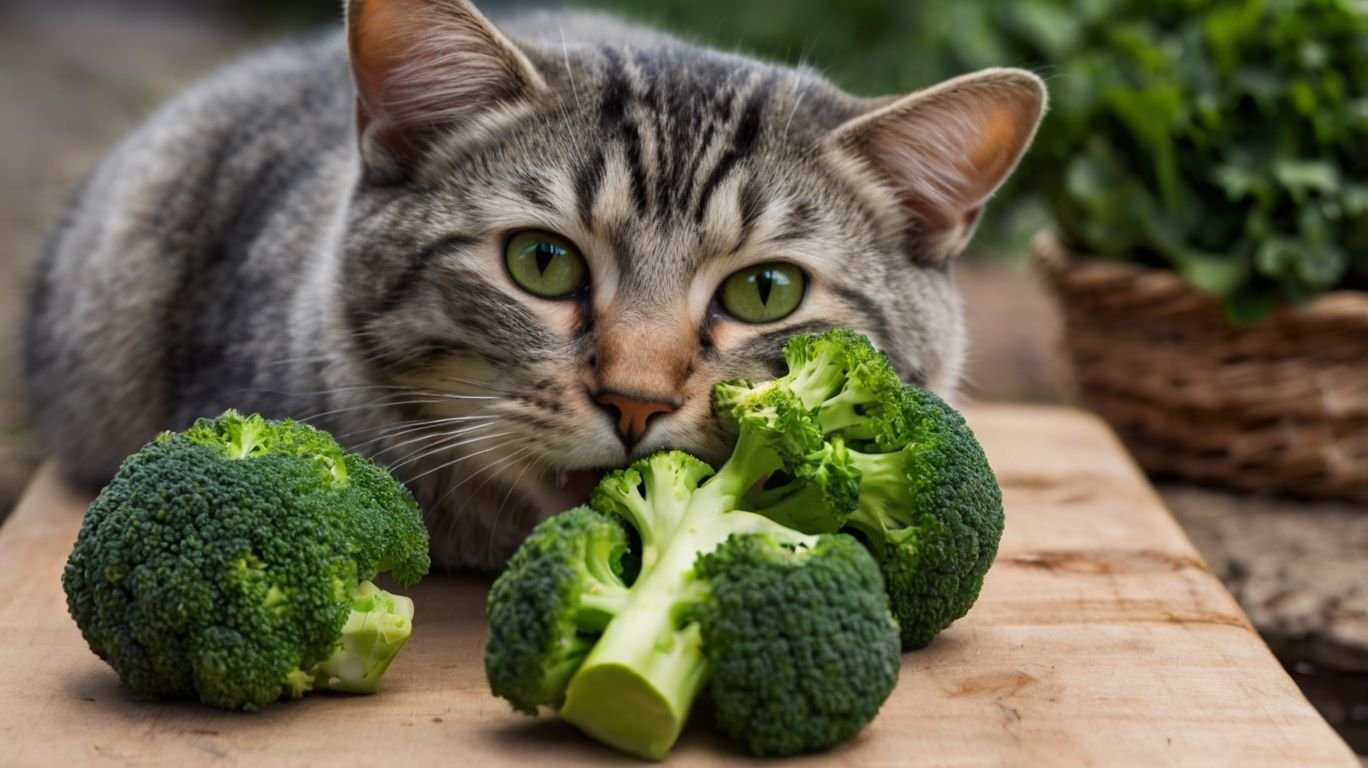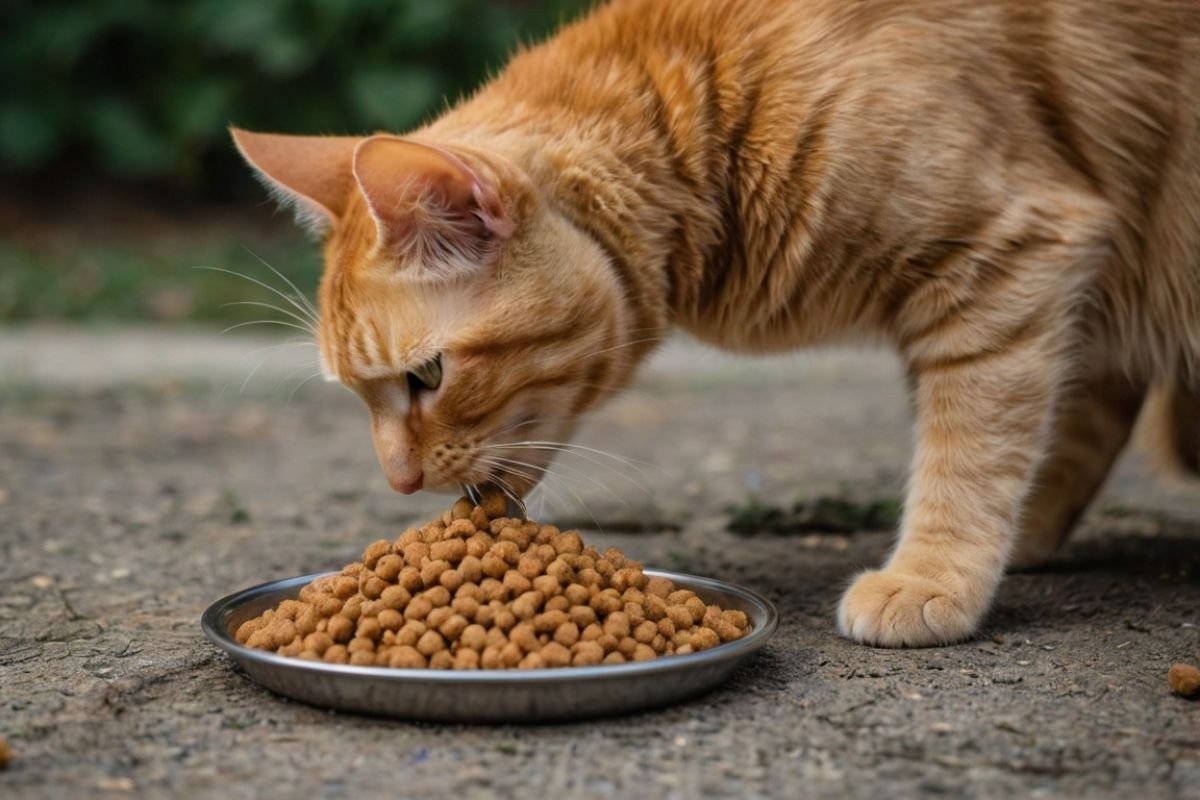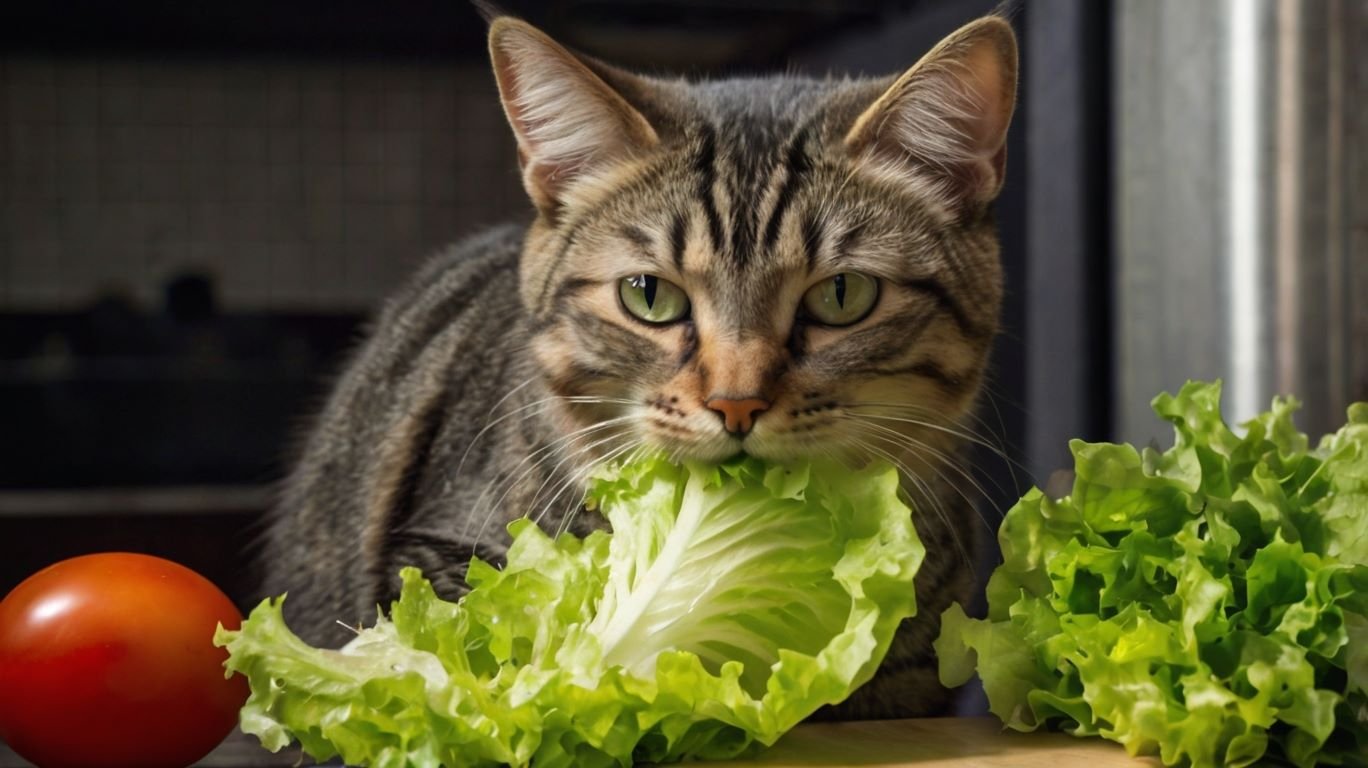One sunny morning, I caught my orange cat, Rio, sitting perfectly still. His eyes were fixed on my newest home addition—a tall, spiky snake plant. That curious look on his face made me freeze.
Rio wasn’t chewing the plant—thankfully. But that intent stare got me thinking. I had just brought the plant home the day before, excited to add some greenery to my living room. Like many cat parents, I love decorating with plants. They bring life and color to any space.
But that moment with Rio reminded me of something important: not all plants are safe for our furry friends.
So I put on my researcher hat. I spent days learning everything I could about snake plants and cats. I talked to vets. I read studies. I joined forums where other cat parents shared their stories.
And now, I’m sharing everything I’ve learned with you.
Because your cat’s safety matters more than any plant. Whether your cat is curious but cautious like Rio, or a notorious plant-nibbler, you deserve clear answers about the risks.
Let’s dive in together, shall we?
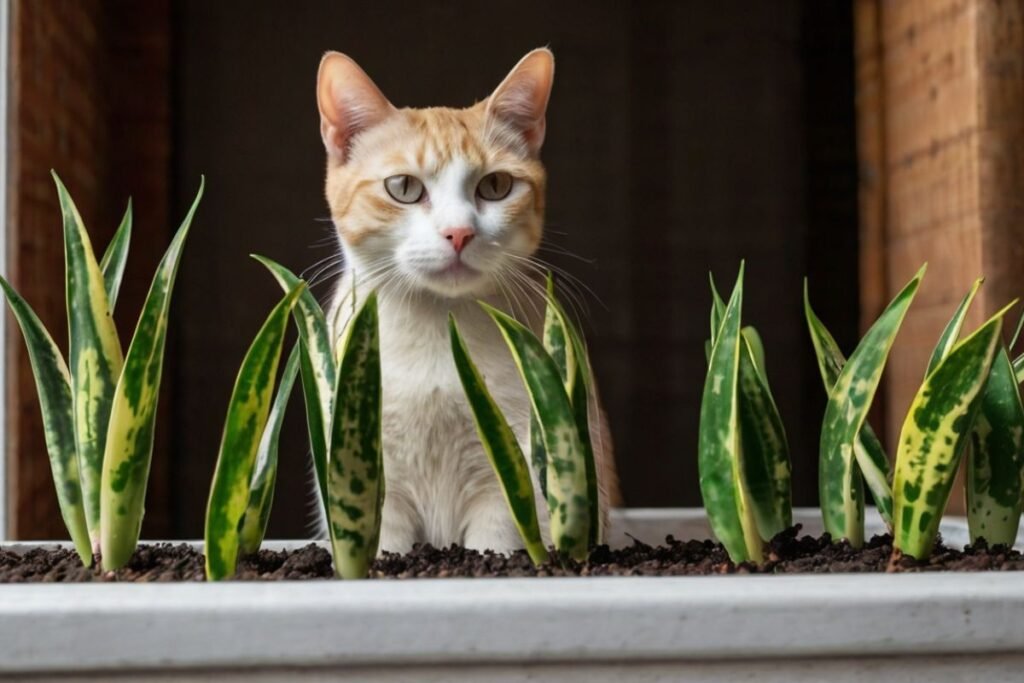
Table of Contents
Getting to Know Snake Plants
Before we talk about cats, let’s understand what makes snake plants so popular in homes today.
Snake plants (scientific name: Sansevieria trifasciata) are indoor superstars. You might also hear them called mother-in-law’s tongue, Saint George’s sword, or viper’s bowstring hemp.
They’re hard to miss with their distinct look:
- Tall, sword-like leaves that stand straight up
- Dark green coloring with light green or yellow patterns
- Thick, waxy leaves that feel sturdy to the touch
What makes them so loved by plant owners? They’re nearly impossible to kill! Snake plants:
- Survive in low light (even that dark corner of your apartment)
- Need water only once every few weeks
- Clean indoor air by removing toxins
- Rarely attract pests
- Grow slowly, so they don’t need frequent repotting
No wonder they’re everywhere these days—from trendy coffee shops to home office corners.
But here’s where things get tricky.
Also read, Can Cats Eat Mango?
The Hard Truth: Snake Plants and Cats Don’t Mix
I need to be clear about this: snake plants are not safe for cats. Not even a little bit.
While they’re wonderful plants for many reasons, they’re toxic to our feline friends. Even a small nibble can cause problems for your cat.
And yes—snake plant poisoning is rarely fatal. But “rarely fatal” isn’t the same as “safe,” is it? I wouldn’t want Rio to suffer even minor discomfort just because I wanted a pretty plant.
Why Are Snake Plants Harmful to Cats?
Let’s talk science for a moment.
Snake plants contain natural compounds called saponins. These chemicals help the plant survive in the wild by keeping insects and animals from eating it. Smart for the plant, but not so great for our cats.
Saponins taste extremely bitter. When a cat bites into a snake plant leaf, the taste alone often makes them stop. But even that small amount can cause irritation to their mouth, throat, and digestive system.
Think of it like this: saponins are the plant’s built-in defense system. They’re saying, “Don’t eat me!” But cats don’t understand plant warnings.
Snake Plant Poisoning: What Really Happens
If your cat takes a bite of a snake plant, here’s what might unfold:
Immediate Reactions
Within minutes, you might notice:
- Drooling or foaming at the mouth
- Pawing at the face or mouth
- Looking uncomfortable or confused
Short-Term Symptoms (Within Hours)
As the toxins affect the digestive system:
- Vomiting (sometimes repeatedly)
- Diarrhea (may contain plant material)
- Refusing food or water
- Lethargy or unusual quietness
Ongoing Signs (24-48 Hours)
If left untreated:
- Continued digestive upset
- Dehydration from fluid loss
- Weakness
- Swelling around the mouth or tongue
Every cat reacts differently. Some may show only mild drooling. Others might have more severe symptoms, especially if they ate a larger amount.
Rio is a cautious cat who doesn’t usually chew plants. But even careful cats can get curious. That’s why I never take chances with toxic plants in my home anymore.
What To Do If Your Cat Eats a Snake Plant: Step by Step
Let’s say it happens—you catch your cat munching on a snake plant leaf, or you notice symptoms and suspect your plant is the cause. Here’s exactly what to do:
1. Remove Access Immediately
- Gently move your cat away from the plant
- Put the plant somewhere completely inaccessible
- If possible, check how much is missing (a small bite? half a leaf?)
2. Clean Your Cat’s Mouth
- Wipe around their mouth with a damp cloth
- Offer a small amount of water to drink
- Don’t force water if they refuse
3. Document What Happened
- Note the time your cat ate the plant
- Take photos of the plant and the damaged areas
- Write down any symptoms you notice
4. Call Your Veterinarian Right Away
Even if symptoms seem mild, call your vet and explain:
- What plant was eaten
- How much you think was consumed
- What symptoms you’re seeing
- Your cat’s age, weight, and any health conditions
Your vet may ask you to:
- Bring your cat in immediately
- Watch for specific symptoms at home
- Induce vomiting (though NEVER do this without veterinary guidance)
5. If Your Regular Vet Is Unavailable
Call one of these 24/7 resources:
- ASPCA Animal Poison Control: (888) 426-4435
- Pet Poison Helpline: (855) 764-7661
These services charge a fee, but they can guide you through emergency steps while connecting with a local emergency vet.
6. Follow Treatment Instructions Carefully
Your vet might recommend:
- Fluid therapy to prevent dehydration
- Medication to control nausea
- Activated charcoal to absorb toxins
- Monitoring for 24-48 hours
A Real Story to Consider
A member of my cat forum shared how her kitten chewed a snake plant while she was at work. By the time she got home, the kitten was vomiting and lethargic. After a scary night at the emergency vet and a $600 bill, her kitten recovered fully. But she said the worry and the cost weren’t worth keeping that plant around.
Recovery: What to Expect After Snake Plant Exposure
If your cat has eaten a snake plant, here’s what recovery typically looks like:
For Mild Cases
- Symptoms usually improve within 24 hours
- Your cat may be quieter than usual
- Appetite should return gradually
For More Severe Cases
- Recovery may take 2-3 days
- Your vet might send home medication
- Follow-up visits may be needed
Helping Your Cat Feel Better
- Offer small amounts of water frequently
- Provide a quiet, comfortable place to rest
- Follow your vet’s food recommendations
- Give any prescribed medications exactly as directed
While most cats recover completely, the experience is stressful for everyone. And sadly, there’s always a small risk of complications—especially for very young, very old, or already-sick cats.
The Big Question: Why Do Cats Eat Plants Anyway?
This is something I’ve wondered about Rio. He’s not a plant-eater, but many cats are. Why would a meat-eater like a cat be drawn to plants?
Here are some fascinating reasons:
Natural Instincts
In the wild, cats sometimes eat small amounts of grass and plants to:
- Help with digestion
- Get additional fiber
- Induce vomiting to clear hairballs
Curiosity
Cats are naturally curious creatures. New items in their territory need to be investigated—sometimes with their mouths!
Boredom
Indoor cats especially may chew plants out of simple boredom. Think of it as the feline version of stress-eating.
Texture and Movement
The way leaves move and feel can trigger a cat’s hunting instincts. Those swaying snake plant leaves? They might look like prey to your cat.
Nutritional Seeking
Some experts believe cats might seek out plants when they’re missing certain nutrients in their diet.
In Rio’s case, he seems content to look but not touch. (He doesn’t even like mango, so maybe he’s just picky about everything!) But I’ve learned never to assume a cat’s behavior will stay the same. Even the most plant-ignoring cat might decide to take a bite someday.
How Toxic Are Snake Plants Really? Let’s Be Honest
You’ll find different opinions online about just how dangerous snake plants are to cats. Some sites call them “mildly toxic” while others use scarier language.
Here’s what the science really tells us:
Toxicity Level: Moderate
- Snake plants won’t usually cause death
- But they can cause significant discomfort
- Symptoms can last for several days
The Bitter Factor
- Many cats take one bite and stop because of the bitter taste
- But that single bite can still cause symptoms
Size Matters
- Smaller cats (like kittens) are at higher risk
- Even a small amount affects them more
Individual Sensitivity
- Some cats are more sensitive than others
- Previous health issues can make reactions worse
The bottom line? While snake plants aren’t as deadly as lilies (which can cause kidney failure in cats), they’re definitely not safe. And when it comes to our beloved pets, why take any risk at all?
Creating a Cat-Safe Home: My Personal Approach
After my scare with Rio and the snake plant, I completely rethought my approach to houseplants. Here’s what I do now to keep Rio safe while still enjoying plants:
My Rio-Safe Plant Strategy 🐾
1. Know Before You Grow
- I research EVERY plant before bringing it home
- I check the ASPCA toxic plants list
- I confirm with my vet if I’m unsure
2. Smart Placement
- All non-toxic plants stay at ground level
- Any potentially harmful plants go in closed rooms Rio can’t access
- I use hanging planters well out of jumping reach
3. Monitor Plant Health
- I remove fallen leaves immediately
- I check plants for damage regularly
- I watch for signs of plant stress that might release more toxins
4. Create Distractions
- Rio has his own cat grass pot to nibble
- I rotate his toys weekly to keep him interested in proper play
- His window perch keeps him entertained watching birds instead of eyeing my plants
5. Training That Works
- I use plant-safe bitter spray on pots and soil
- I clap and say “no” if he shows interest in off-limits greenery
- I praise and treat him when he ignores plants
This approach has kept both Rio and my plants happy for over a year now. The key is consistency and never assuming your cat “knows better.”
Beautiful AND Safe: Cat-Friendly Alternatives to Snake Plants
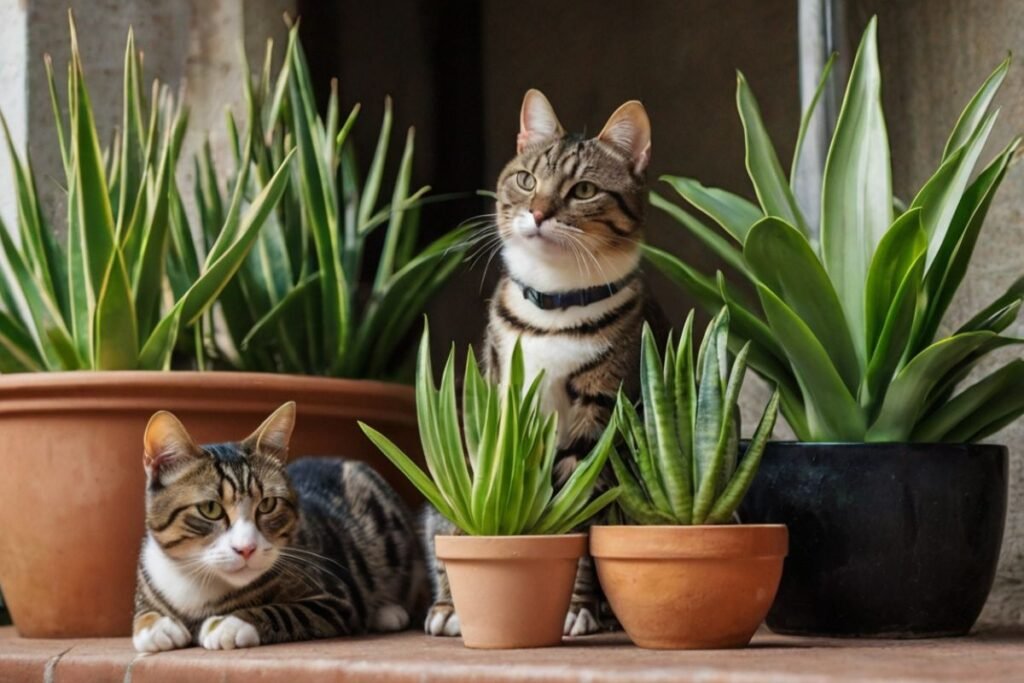
The good news? There are plenty of stunning plants that are completely safe for cats. Here are my top recommendations for getting that snake plant look without the danger:
✅ Cast Iron Plant (Aspidistra elatior)
- Similar upright, sturdy leaves
- Equally low-maintenance
- Totally non-toxic to cats
✅ Spider Plant (Chlorophytum comosum)
- Fun, arching leaves
- Grows baby plants you can share
- Safe even if nibbled
✅ Areca Palm (Dypsis lutescens)
- Tall, statement-making presence
- Graceful, feathery fronds
- Pet-friendly alternative for large spaces
✅ Calathea Varieties
- Beautiful patterned leaves (some look like snakeskin!)
- Movement throughout the day as leaves open and close
- Safe for curious cats
✅ Boston Fern (Nephrolepis exaltata)
- Lush, full appearance
- Air-purifying benefits
- Completely harmless to cats
✅ Peperomia Varieties
- Compact and cute
- Many different leaf patterns
- Perfect for small spaces
✅ Money Tree (Pachira aquatica)
- Interesting braided trunk
- Brings good luck (according to feng shui)
- Non-toxic to pets
For a complete list of cat-safe plants, I highly recommend bookmarking the ASPCA’s non-toxic plants database. It’s my go-to resource before any plant purchase.
Clever Prevention: Keeping Cats and Plants Separate
Sometimes you really want a particular plant that isn’t cat-safe. In those cases, here are some proven strategies to keep everyone safe:
Physical Barriers That Actually Work
- Glass terrariums with secure lids
- Plant cabinets with doors
- Room dividers that cats can’t jump over
Cat Deterrents (Tested and Approved)
- Aluminum foil around plant bases (cats hate the texture and sound)
- Double-sided tape near plants (sticky paws are no fun)
- Citrus peels in soil (most cats dislike the smell)
Distraction Techniques
- Place cat grass next to cat beds
- Position bird feeders outside windows
- Create vertical space with cat shelves away from plants
The Remote Approach
- Designate a “plant room” that stays closed
- Create a hanging garden from ceiling hooks
- Use high shelves with no “stepping stone” furniture nearby
With Rio, I found that providing alternatives is more effective than just saying “no.” His cat grass pot gets plenty of attention, while my other plants remain unscathed.
When Prevention Fails: Recognizing an Emergency
Despite our best efforts, accidents happen. Here’s how to tell when a plant encounter requires immediate emergency care:
Get to an Emergency Vet RIGHT NOW If:
- Your cat is having difficulty breathing
- There’s severe swelling of the mouth or throat
- Your cat is experiencing seizures
- Your cat becomes unconscious or extremely lethargic
- There’s blood in vomit or diarrhea
- Your cat can’t swallow or is in obvious pain
Don’t wait. Don’t “see if it gets better.” These symptoms need professional help immediately.
Find Your Nearest Emergency Vet Now
Before an emergency happens:
- Save your nearest 24-hour vet clinic in your phone
- Know the route to get there
- Have a pet carrier easily accessible
- Keep your cat’s medical records handy
Being prepared can literally save your cat’s life.
A Lesson from Rio: Why I’m Sharing This Story
That morning when Rio stared at my snake plant taught me something valuable. One curious moment, one quick bite—that’s all it would take to turn a normal day into an emergency.
Rio trusts me to keep his world safe. He doesn’t know which plants are harmful. He can’t read warning labels or browse the ASPCA website.
He relies on me entirely.
I imagine your cat trusts you the same way. That bond—that responsibility—is why I wrote this post. Not to scare you, but to inform you. Because loving our cats means protecting them, sometimes from dangers they don’t recognize.
Your Questions Answered: FAQs About Snake Plants and Cats
Since writing my initial post about Rio’s plant encounter, I’ve received many questions from fellow cat parents. Here are thorough answers to the most common ones:
Q: Can a cat die from eating a snake plant?
A: Death from snake plant ingestion is extremely rare, but not impossible. Most cases involve mild to moderate symptoms that resolve with treatment. However, small kittens, elderly cats, or cats with existing health problems face higher risks of serious complications.
Q: Are the effects worse for kittens?
A: Yes, absolutely. Kittens are smaller, so toxins affect them more dramatically. Their developing systems also can’t process toxins as efficiently as adult cats. Plus, they’re often more likely to chew on plants out of curiosity.
Q: What if my cat just licked the leaf but didn’t bite it?
A: Even licking can transfer some of the plant’s toxins. The saponins in snake plants can irritate mucous membranes even with minimal contact. Watch for drooling or mouth discomfort, and call your vet if you notice anything unusual.
Q: Which part of the snake plant is most toxic?
A: All parts of the snake plant contain the toxic saponins, but they’re most concentrated in the leaves. The roots contain less but are still harmful. Even the water in a snake plant’s pot can become slightly toxic over time.
Q: Will my cat instinctively avoid toxic plants?
A: Unfortunately, no. While the bitter taste may deter some cats after an initial bite, they don’t have an instinct to avoid toxic plants beforehand. Never rely on your cat’s judgment for plant safety.
Q: Can I keep snake plants if I spray them with bitter apple?
A: Bitter sprays are not 100% reliable. Some cats ignore the taste, the spray wears off, and you might forget to reapply it. It’s safer to choose non-toxic plants instead.
Q: How long after eating a snake plant will symptoms appear?
A: Symptoms typically begin within 2-6 hours after ingestion, with mouth irritation sometimes starting even sooner. However, some cats might not show obvious symptoms for up to 12 hours, which is why monitoring is important.
Q: Will pet insurance cover snake plant poisoning?
A: Most comprehensive pet insurance plans cover plant toxicity treatment, but always check your specific policy. The treatment can cost anywhere from $300 for mild cases to over $1,000 for more severe ones requiring overnight care.
Making the Right Choice: Plants vs. Pets
As we wrap up this guide, let’s talk about the choice many plant-loving cat parents face.
Snake plants are:
- Stylish
- Nearly indestructible
- Great air purifiers
But they’re also toxic to the furry family members who trust us with their lives.
When I weighed these facts, my decision was simple. No plant—no matter how trendy or easy to care for—is worth risking Rio’s health. Not even for a day.
I rehomed my snake plant to a friend without pets. Then I replaced it with pet-safe alternatives that give me the same joy without the worry.
Because at the end of the day, our cats give us so much:
- Unconditional love
- Comfort when we’re sad
- Laughter with their antics
- Companionship through life’s journey
The least we can do is create a home where they can safely explore, play, and live without hidden dangers.
A Final Thought: Creating a Purr-fect Balance
You can absolutely be both a plant lover and a cat parent. You just need to be a little more thoughtful about your choices.
Research before you buy.
Choose pet-safe options when possible.
When in doubt, keep plants and pets separated.
In my home, Rio now has safe greens to sniff, and I have the peace of mind knowing he can roam freely without risk. We’ve found our balance—and with the information in this guide, I hope you can find yours too.
Because a home filled with both plants AND cats? That’s something worth creating—safely.
Do you have questions about other plants and their safety for cats? Let me know in the comments below!

Shahriar Robin is the creator of WhatPetsCanEat.com, a passionate pet lover and dedicated cat dad to Rio, a curious two-year-old orange feline who inspired this website. With a love for animals and a knack for research, Shahriar shares trusted, easy-to-understand information to help fellow pet owners make safe, healthy food choices for their furry friends.
